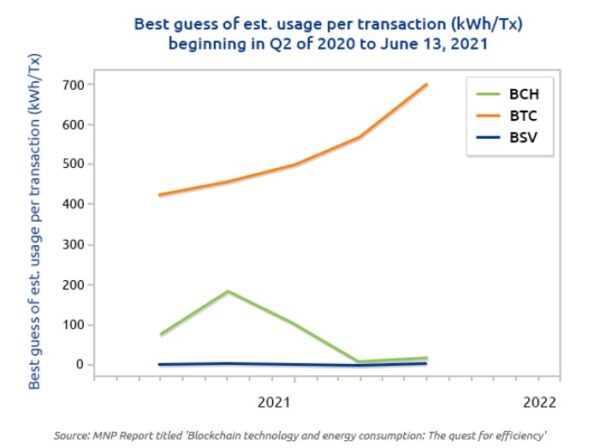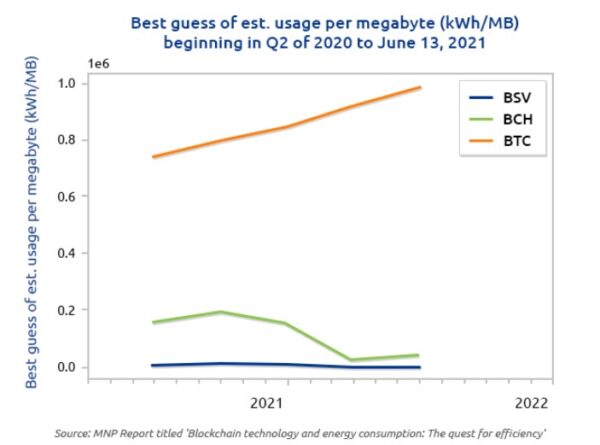The COVID-19 pandemic has brought about many closures of businesses and declarations of bankruptcy, negatively impacting different industries. However, as many activities are relegated online to prevent the spread of the coronavirus, the market for digital currencies has grown as people find new ways to earn money while in the comforts of their home.
And now that businesses are starting to recover and adjust to the new normal way of living, blockchain, on which pioneer digital currency Bitcoin is built on, is also gaining ground as a viable technology that can effectively resolve longstanding issues that exist in many industries, such as data integrity and transparency, latency and inefficiency of systems and processes, and susceptibility to fraud.
The adoption and use of Bitcoin and blockchain become more widespread globally and, at the same time, regulatory requirements are becoming stricter about the negative environmental impact of businesses and technologies. And with the issue of the massive energy consumption of Bitcoin mining, there is an increasing need to examine Bitcoin energy efficiency. You can check it on www.bitcoinassociation.net.
And this is why MNP, one of the leading national accounting, taxation and business consulting firms in Canada, has embarked on an intensive study entitled “Blockchain technology and energy consumption: The quest for efficiency.”
“The purpose of this document is to establish a transparent framework for estimating power consumption of any SHA-2561 blockchain. In addition, MNP aims to determine which protocol chosen from a sample of Bitcoin SHA-256 blockchains is more energy-efficient,” the MNP study stated.
Measuring Bitcoin Energy Efficiency

Energy efficiency is not just a measure of energy consumption. And especially when it comes to Bitcoin, there is a need to take into consideration a number of variables, such as equipment efficiency, block size, throughput and block difficulty. And this is what MNP did in measuring Bitcoin energy efficiency and comparing BTC, BCH and BSV.
“The model MNP developed estimates the energy consumption of the entire network. Our model used block data collated by a multi-chain block explorer to provide the base of the network data from April 1, 2023, to June 13, 2023. The block difficulty is used to determine the probable hashes required to solve a block.
By knowing the hashes required to solve a block and the amount of time the network took to solve the block, it’s possible to estimate the hashpower of the network (Th/s),” the report explained.
And based on a model created by MNP, the study has found that BSV is more energy efficient than BTC and BCH. This is because BSV has the capacity for unbounded scaling, which provides a huge advantage against the other unscalable blockchains.
“Transactions are the ultimate measure of throughput. The number and size of the transactions in a block will affect the size of the block. BTC has a strictly limited block size approaching 4MB. BCH has a much more permissive limit of 32MB. BSV is unbound by block size.
Since mining is what consumes energy, and blocks are the product of mining: the more transactions in a block, the lower the energy consumption per transaction. Similarly, the larger a block can be (measured in megabytes), the lower the energy consumption per megabyte,” the report explained.
BTC and BCH are stuck with limited block size and throughput and would have to rely on second-tier solutions in order to mitigate the fact that its base layer (the blockchain) does not scale. Having the ability for limitless scaling means that the block size and throughput continue to be increased, at the same time fees per transaction are constantly reduced.
At present, the BSV blockchain is already at 2GB blocks, over 5,000 transactions per second (tps)—with the upcoming Teranode update increasing it further to up to 100,000 tps once released—and fees per transaction of fractions of a cent. As the network scales, terabyte-sized blocks and millions of tps at fess that can hardly be felt are made possible. And this is what truly justifies the huge energy consumption of Bitcoin mining.
The Utmost Utility of the BSV Blockchain

Because the BSV blockchain can be scaled unbounded, it becomes utterly useful for many businesses across all kinds of industries. BSV has transcended being just a payment system as it can handle anything data-related.
For instance, EHR Data is developing a global healthcare database on the BSV blockchain that breaks down data siloes, providing stakeholders access to information crucial to the monitoring, prevention and cure of many diseases. Likewise, VXPASS has recently just become the first-ever blockchain-based digital vaccine card provider in the City of San Francisco.
These are but two examples of enterprises in one industry utilizing the BSV blockchain, not only to establish profitable businesses but to make a difference in the world. There are currently nearly 500 companies building on the BSV blockchain from industries such as government, banking and finance, iGaming, eSports, social media and supply chain management.
“There are actually huge benefits to using Bitcoin, and that’s what justifies the energy cost. No one argues that we shouldn’t burn energy to run a hospital because it’s obvious what the benefit of that is and it’s obvious what would happen if you try to run a hospital without energy input. Bitcoin provides utility in ways that we haven’t even imagined just yet,” nChain CTO and BSV Infrastructure Team Technical Director Steve Shadders said during a panel discussion about the sustainability of Bitcoin at the recently held CoinGeek Conference in New York.



















